The latest grave to be cleared last Saturday (14th November), by Jean and Kay, was that of Admiral Thomas Abel Brimage Spratt (1811-1888) .………
What a name to conjure with!
Not only was he following in the family tradition of rising through the echelons of the Royal Navy but he also seems to have been a little bit of an Indiana Jones of the period, exploring worlds of ancient civilisations and the boundaries of knowledge. In between his adventurous exploits he, albeit inadvertently, took time to map the waters of the Teignmouth Bar.
Thomas Abel Brimage Spratt was born in 1811 in Woodway House, Woodway Road, East Teignmouth. He was one of thirteen children and also the eldest son of Commander James Spratt RN (who distinguished himself at Trafalgar) and Jane Brimage. (As a complete aside, one of his sisters, Leah born 1828, was known as “Loopy”. She died at sea in 1859 on passage from India to England)
He entered the navy in 1827 and was attached to the surveying branch in which he was engaged almost continuously until 1863 in surveying the Mediterranean. This was interrupted by the Crimean War in which, as commander of the “Spitfire”, he rendered distinguished service in the Black Sea. He was gazetted with especial praise for his services at the fall of Kimbourn for planning the attack to capture the Turkish city and placing buoys which led the fleet to its position. He received the Baltic, Crimean and Turkish medals and the Azof clasp and was awarded Companion of the Order of the Bath after the Crimea War in 1855.
Malaria and Teignmouth
The Crimean War was not the only disruption to his naval surveying activities though. Following a severe bout of malaria he was sent home on sick-leave and, as a result, spent the years 1848-49 studying the movements of the Bar sands at Teignmouth. He published a book on the subject, dedicated to Sir William Reid, Governor of Malta, entitled An Investigation of the Movements of the Teignmouth Bar. He also gave all his data to the Teignmouth Harbour Commission who, at that time, were struggling to relieve the local trade from an unjust tax, levied annually by the town of Exeter. It has been suggested that Sprat Sands are named after him (though note different spelling).
Isambard Kingdom Brunel congratulated Captain Thomas Spratt on his scheme to improve the promenade and the harbour entrance at the same time; “I never read a more sensible, concise and practical discussion of such a subject”. The main improvements were never carried out; however, some dredging works were implemented in 1857 near the Den Point following complaints from mariners. This was followed by further dredging works in 1865 and the later building of a groyne 330 yards long from abreast of Ferry Point to arrest sand.
Later Service
After serving on the allied council of war at Paris in January 1856 he surveyed the approaches to the Suez Canal, a project then opposed by the British government. 1863 saw the end of his service afloat, due to his recurring malaria. He was appointed a Commissioner of Fisheries from 1866 to 1873 and, although on the “retired” list, he was promoted to Rear-Admiral in 1872 and Vice-Admiral in 1878. From 1879 he was Acting Conservator of the Mersey Conservancy Board.
His Legacy
He died in Tunbridge Wells on the 10th March 1888 leaving a widow, Sophie Dean Spratt (Sophia Price, whom he married in 1844) and three sons Edward James, Frederick Thomas Nelson and Arthur Graves Spratt (they had two other sons who died in infancy and were buried in Malta). He left his journals to his second son Frederick who died in 1934, in turn leaving his property to his son Frederick Graham Spratt Bowring and his daughters. His journals have disappeared. What a loss! We do have some records though because he did publish during his lifetime, but those original journals must have been a fascinating collection of research.
Spratt the Polymath
So Spratt was an illustrious naval officer but he will probably be remembered in history for his contributions, either explicit or incidental, in the fields of exploration of nature, geology and archaeology. In those he was perhaps verging on the typical Victorian polymath of his time. He was recognised in that capacity through being made a Fellow of the Geological Society in 1843, of the Royal Society in 1856, of the Royal Geographical Society in 1859, of the Society of Antiquaries in 1873 and of the Zoological Society of London in 1883. He was also important as an oceanographer, conducting pioneering if ultimately unsuccessful work on currents which brought him into contact with the scientific community. He published books and articles on the Mediterranean, chiefly on the history and antiquities of Crete, an example of which is “Travels and Researches in Crete”, 1865.
I will give a few examples here of his contributions with links to further information if you are interested.
Pygmy Elephant
Spratt investigated the caves at Malta and obtained remains of the pygmy elephant (Elephas melitensis or P. falconeri). This was an example of insular dwarfism, reaching only 90 cm (3 ft) in height. It may have been the source of the legend of the Cyclops. It was described by Hugh Falconer, a contemporary natural scientist who was the first to suggest the modern evolutionary theory of punctuated equilibrium. (As an aside, Spratt himself had two fossil species named in his honour).
Troy
One of the maps made by Thomas Spratt known as “Spratt’s Map” was used by archaeologists Heinrich Schliemann, Wilhelm Dorpfeld, and Carl Blegen, which contributed to the discovery of Troy, because the name Troy with a question mark was added by a German professor of classical antiquities working with Spratt.
Crete: The Island that Tipped
It was Spratt who discovered the way in which relative levels of land and sea had changed over the island of Crete in historic times. He wrote of his findings to Sir Charles Lyell, an eminent contemporary geologist, in 1856:
“Dear Sir Charles, Fearing you may be impressed with the idea that the eastern end of Crete had gone down as much as the west, I am induced to write a line to rectify it, if so; and to state that movements in the eastern half of the island have neither been as great nor apparently as uniform as the western movement. Both are subsequent to the historic period and the evidences are in both instances indicated by the elevation or partial submergences of some ancient Greek building or city.”
Phaistos and its Disc
Phaistos was an ancient city on the south coast of Crete, dating perhaps as far back as 6000 BC. The city rose up from the fertile plains of the Messara region and became part of the growing Minoan empire. The first Minoan palace of Phaistos was built around 2000 BC, about the same time as the main palace of the empire was built in Knossos. Both of these Palaces were destroyed by a strong earthquake in 1700 BC and rebuilt on top of the old ones.
Captain Thomas Spratt was the first to establish the precise location of Phaistos during the Mediterranean Survey of 1853 which was cataloguing the topography and settlements of Crete.
And the Disc? This was one of the later discoveries at Phaistos in 1908 which challenged archaeologists until 2014 when the puzzle was solved. It is a clay disc, around 16 centimeters in diameter, both sides of which are covered with symbols, arranged in a spiral pattern, going clockwise around into the centre. The symbols are similar to hieroglyphs and represented a completely new, previously unknown, language. It can now be seen at the Iraklion Archaeological Museum.
In 2014, after 6 years of analysis of this “first Minoan CD-ROM“, Dr. Gareth Owens in collaboration with John Coleman, professor of phonetics at Oxford, have figured out not only what the language sounded like but also some of the meaning it conveys, believed now to be a prayer to a Minoan goddess.
Thomas Abel Brimage Spratt, Admiral, explorer, polymath and humble surveyor of the Teignmouth estuary. A name to conjure with indeed!
His grave is very close to the Higher Buckeridge Road entrance to the cemetery. The headstone is impressively large, as you can see from the photographs, and carries the following inscription:
In the Memory
of
Admiral Thomas Abel
Brimage Spratt CB FRS FGS
Who died on the
12th March 1888
Aged 76
Entering the Navy in 1826 he continued
a faithful public servant up to his death
In pace requiescat
Also
In the Memory of
Sophia Dean
widow of the above
who died on the
16th February 1900
Aged 84




Before and after pictures of Admiral Spratt’s grave
The above information has been collated from:
British Museum ….
Wikipedia (pygmy elephant)
Wikipedia (Hugh Falconer)
Dawn of Discovery (Chapter 7)
Travels and Researches in Crete, Capt Thomas Spratt
Royal Museums Greenwich …..
Wikipedia (Thomas Abel Brimage Spratt)
Project Gutenberg …..
World Archaeology (Crete tipping)
Wikipedia (Woodway House)
Phaistos Disc …..
Brimage family history
Oxford Dictionary of National Biography
World News (Phaistos Disc)
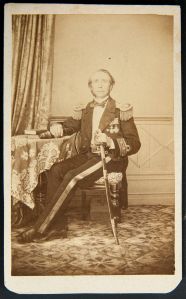
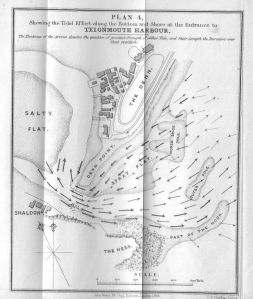
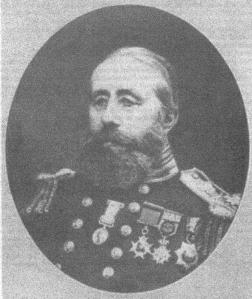

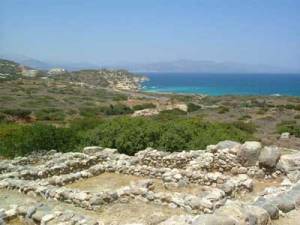

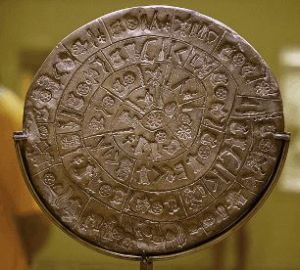
2 thoughts on “Admiral Thomas Abel Brimage Spratt”